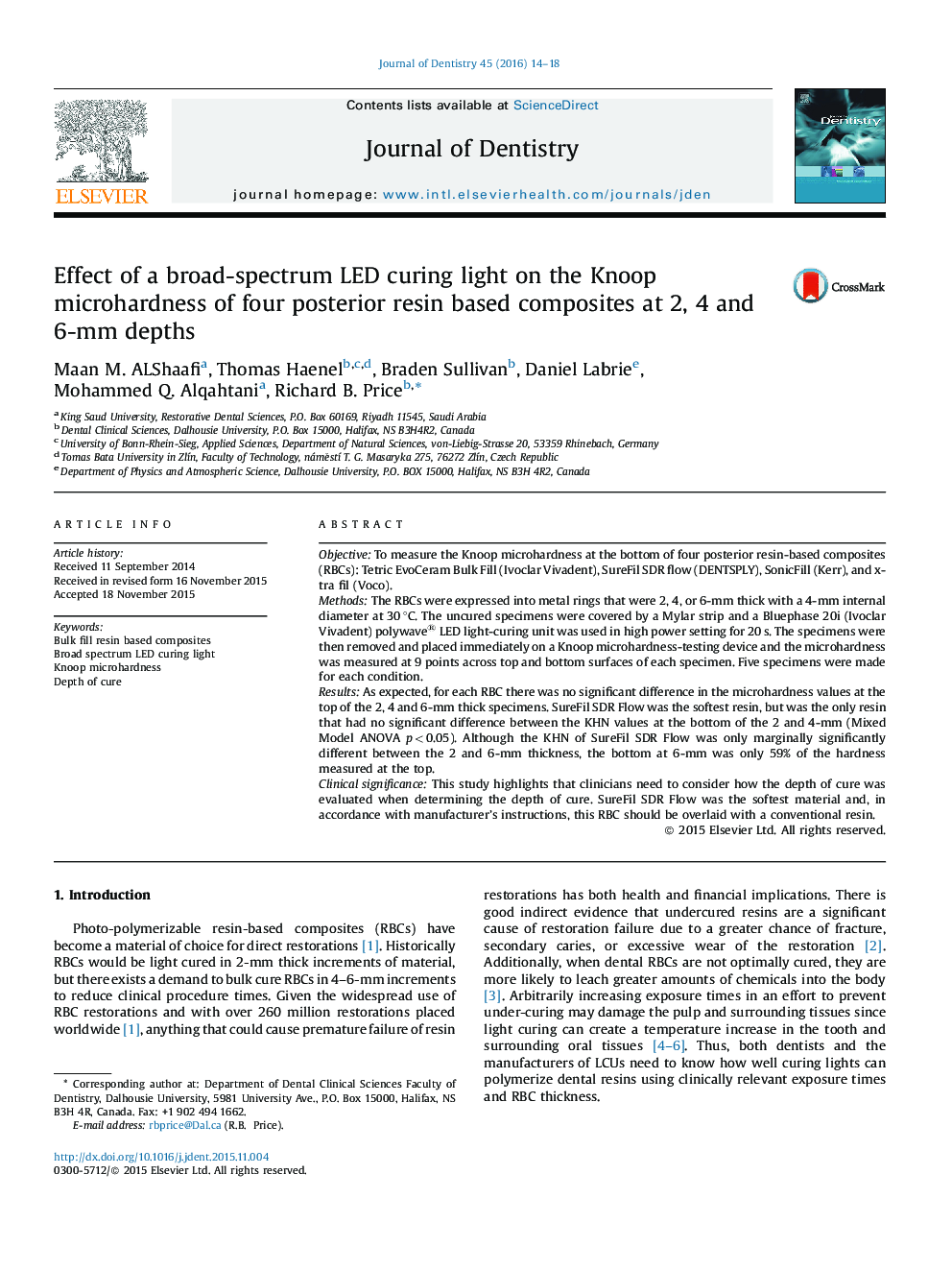| Article ID | Journal | Published Year | Pages | File Type |
|---|---|---|---|---|
| 3145000 | Journal of Dentistry | 2016 | 5 Pages |
ObjectiveTo measure the Knoop microhardness at the bottom of four posterior resin-based composites (RBCs): Tetric EvoCeram Bulk Fill (Ivoclar Vivadent), SureFil SDR flow (DENTSPLY), SonicFill (Kerr), and x-tra fil (Voco).MethodsThe RBCs were expressed into metal rings that were 2, 4, or 6-mm thick with a 4-mm internal diameter at 30 °C. The uncured specimens were covered by a Mylar strip and a Bluephase 20i (Ivoclar Vivadent) polywave® LED light-curing unit was used in high power setting for 20 s. The specimens were then removed and placed immediately on a Knoop microhardness-testing device and the microhardness was measured at 9 points across top and bottom surfaces of each specimen. Five specimens were made for each condition.ResultsAs expected, for each RBC there was no significant difference in the microhardness values at the top of the 2, 4 and 6-mm thick specimens. SureFil SDR Flow was the softest resin, but was the only resin that had no significant difference between the KHN values at the bottom of the 2 and 4-mm (Mixed Model ANOVA p < 0.05). Although the KHN of SureFil SDR Flow was only marginally significantly different between the 2 and 6-mm thickness, the bottom at 6-mm was only 59% of the hardness measured at the top.Clinical significanceThis study highlights that clinicians need to consider how the depth of cure was evaluated when determining the depth of cure. SureFil SDR Flow was the softest material and, in accordance with manufacturer’s instructions, this RBC should be overlaid with a conventional resin.
